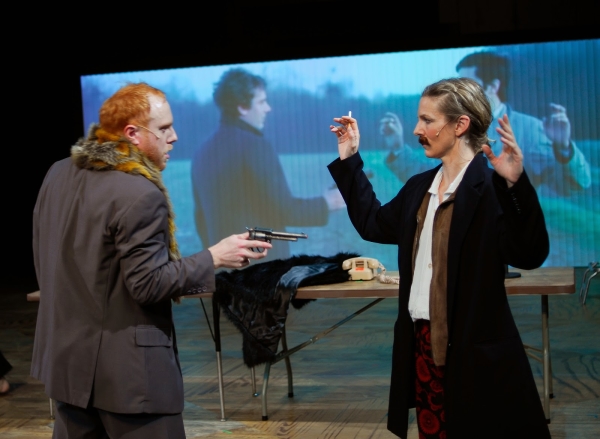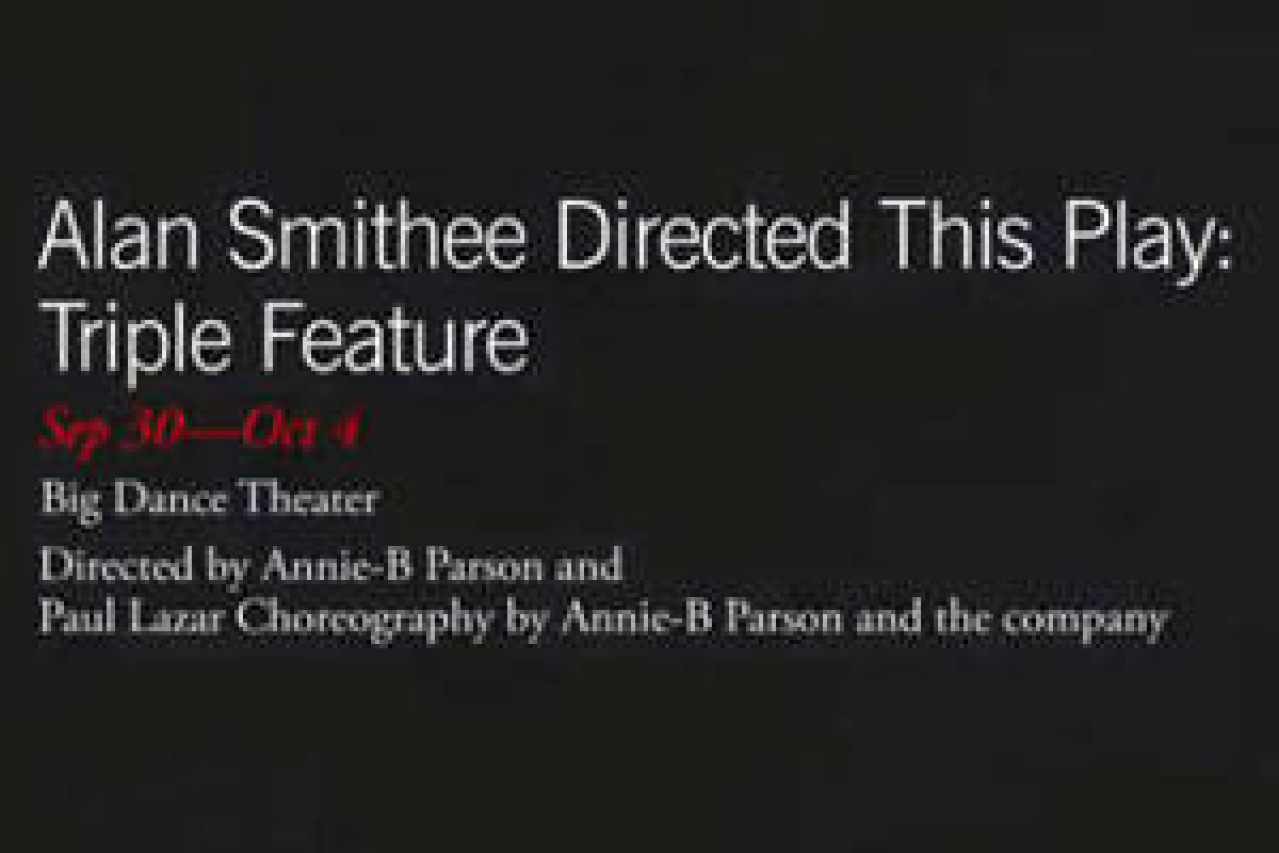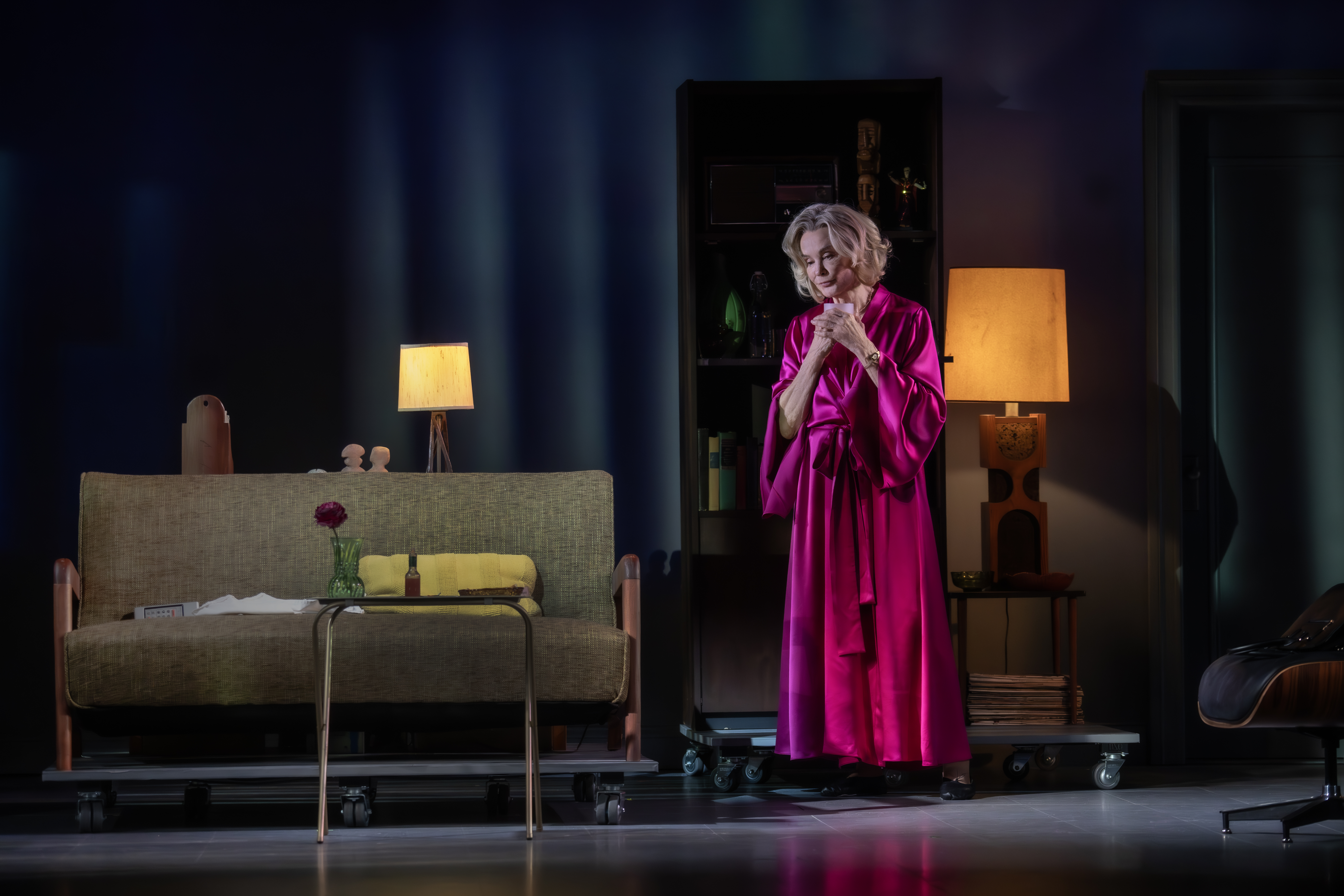Alan Smithee Directed This Play: Triple Feature

(© Mike van Sleen)
In case you were wondering about the connection between Revolutionary Russia, suburban America, and the French criminal underworld, Big Dance Theater spells it all out in its latest mash-up of unlikely source material, Alan Smithee Directed This Play: Triple Feature at BAM's Harvey Theater. OK, so they may not spell it out as much as they dance, and you probably won't walk away with any more insight about this tenuous three-way relationship than when you sat down. That doesn't mean that the show isn't worth seeing. Directors Annie-B Parson and Paul Lazar have crafted a stimulating 75 minutes of cinema-inspired dance theater, even if it is predictably opaque.
The "triple feature" of the evening is Doctor Zhivago (more the novel than the film), the 1983 tearjerker Terms of Endearment, and the 1970 French thriller Le Cercle Rouge. Doctor Zhivago is the story of a Russian doctor surviving the tumultuous events of the early 20th century. Terms of Endearment revolves around a mother-daughter relationship and the years of love and heartbreak that make up each woman's life. Le Cercle Rouge concerns an escaped prisoner and a complicated diamond heist.
The actors deliver lines from the films (or dialogue written by Parson that sounds as if it could be from the films) while performing Parson's choreography of everyday mannerisms and nervous tics. The piece jumps through time, space, and reason as if they were not serious obstacles to the show's forward motion.
"Alan Smithee," by the way, is a pseudonym used by members of the Directors Guild when they want to disavow a film in its final form, after it has passed through the edits and cuts of producers and studio executives. Such a title betrays a naval-gazing focus on artistic process and control, one that is definitely reflected in the piece. The goal seems to be to make a dramaturgical mess of a story as some sort of statement about the limits of creative control in collaboration, then to ask the audience, Did you catch that?
Tei Blow has created a fascinating and beautiful soundscape that does much to enhance the disjointed stage action. He incorporates music as disparate as "Lara's Theme" from Zhivago and David Bowie's "Space Oddity." Occasionally, the sound is warped, as if it is being played from an old VHS. A children's choir sings the Moody Blues song "Nights in White Satin" as the dancers delicately rotate like modern dervishes. As Pasha/Strelnikov from Zhivago, Aaron Mattocks performs a thrilling solo to the waltz from Shostakovich's Jazz Suite No. 2, seemingly flying across the stage.
The athleticism of the cast is made all the more impressive by Oana Botez's gorgeous but heavy-looking costumes. Mattocks is outfitted in a knee-length leather coat with fur lapels. Most members of the cast wear fur, especially in the Zhivago scenes.
Cynthia Hopkins gives a convincingly masculine performance as Zhivago, distinctly gruffer than the soft-spoken approach of Omar Sharif in the film. We never question that she is the doctor, providing one of the few points of reference in this very confusing piece. Other roles seem to change on a whim, or are introduced and never referred to again.
While the evening is billed as a "triple feature," Le Cercle Rouge (which was, curiously enough, the initial inspiration for the piece) gets short shrift. The piece seems to appear only in transitions between Zhivago and Endearment, and its treatment consists mostly of the dancers mimicking the movie as it is projected on an upstage screen. This has the adverse effect of drawing our eyes toward the enigmatic film and away from the stage. Bizarrely, the screen feels more alive, and Alain Delon's mustache is truly hypnotizing.
Alan Smithee is the kind of self-aware, cleverish theater for which a knowing chuckle feels like a more appropriate response than an actual show of emotion. It's very difficult to feel any sympathy for Emma Horton or Yuri Zhivago when you're too busy trying to solve the mystery of their association, which proves to be a fruitless exercise. With the exception of the sprawling nature of both Doctor Zhivago and Terms of Endearment, there didn't seem to be much of a connection.
Regardless, it's better to leave Miss Marple at home for this one and just enjoy the sights and sounds of a talented company of dancer-actors.











